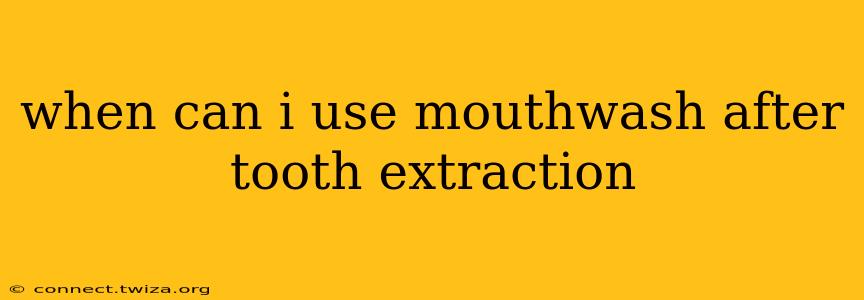Losing a tooth is never fun, and the recovery process requires careful attention to ensure proper healing. One common question many patients have is about using mouthwash after a tooth extraction. While mouthwash can be a helpful part of your oral hygiene routine, using it too soon after an extraction can hinder healing and even lead to complications. This guide will clarify when it's safe to use mouthwash and what types are best suited for post-extraction care.
What Happens Immediately After a Tooth Extraction?
After a tooth extraction, a blood clot forms in the socket where the tooth was removed. This blood clot is crucial for healing; it protects the bone and nerves underneath, preventing infection and promoting healthy tissue regeneration. Disturbing this clot can lead to a painful and potentially serious condition called dry socket.
When Can I Rinse My Mouth After Tooth Extraction?
Generally, you should avoid rinsing your mouth vigorously or using mouthwash for at least 24 hours after a tooth extraction. This allows the blood clot to form properly and stabilize. Gentle rinsing with salt water (see below) can be started after 24 hours, but even then, avoid forceful rinsing.
What About Saltwater Rinses?
Saltwater rinses are often recommended by dentists in the first few days after an extraction. They help to gently clean the area, removing food particles and debris without disturbing the clot. To make a saltwater rinse, dissolve 1/4 to 1/2 teaspoon of salt in 8 ounces of warm water. Rinse gently several times a day, but again, avoid any harsh or forceful rinsing.
What Kind of Mouthwash Can I Use After Tooth Extraction?
After the initial 24-hour period and the dentist's approval, you can consider using a therapeutic mouthwash. Avoid alcohol-based mouthwashes, as alcohol can irritate the extraction site and delay healing. Look for a mouthwash that is:
- Alcohol-free: This is crucial to prevent irritation.
- Gentle: Harsh chemicals can hinder healing.
- Antiseptic: Some antiseptic mouthwashes can help prevent infection. However, always check with your dentist before using any antiseptic mouthwash.
Can I Use Mouthwash With Chlorhexidine After Tooth Extraction?
Chlorhexidine gluconate is a powerful antiseptic often found in prescription mouthwashes. While effective against bacteria, it can sometimes stain teeth and can also interfere with the healing process if used for extended periods. Only use chlorhexidine mouthwash if specifically prescribed by your dentist. They will advise on the appropriate usage duration and frequency.
How Long Should I Wait to Use Mouthwash After Wisdom Tooth Extraction?
The healing process after a wisdom tooth extraction is generally similar to that of other teeth extractions. Therefore, the same guidelines apply: wait at least 24 hours before rinsing with anything other than salt water, and avoid using mouthwash for the first 24 hours. Your dentist will provide specific aftercare instructions tailored to your individual situation.
What if I Develop Dry Socket?
Dry socket is a painful condition that can occur if the blood clot is dislodged from the extraction site. Symptoms include severe pain, a bad taste in the mouth, and a visible empty socket. If you suspect you have dry socket, contact your dentist immediately. They can provide appropriate treatment to alleviate pain and promote healing.
When Can I Resume Normal Mouthwash Use?
Once the extraction site has healed sufficiently (usually within a week or two, but this varies depending on the individual and the complexity of the extraction), you can resume your normal mouthwash routine. Always follow your dentist's advice and discontinue any mouthwash if you experience irritation or other adverse effects.
This information is for general knowledge and does not constitute medical advice. Always consult your dentist or oral surgeon for personalized post-extraction care instructions. They can assess your individual situation and provide tailored recommendations based on your specific needs and the type of extraction performed.
